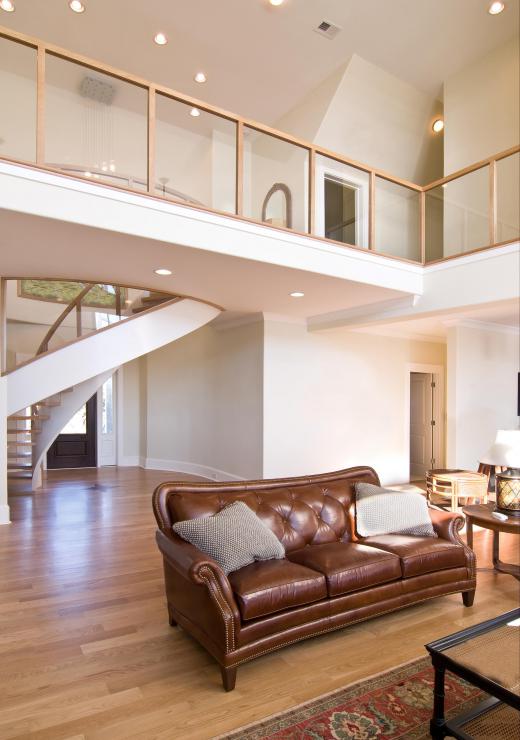Engineered wood is a wood product made from scraps of wood or other materials which contain lignin which are compressed and bound together with glues. Products of this type are used and sold all over the world, and can be found in use as flooring, structural supports, cladding, and a number of other components of a structure. Many lumber yards sell engineered wood and can order specialty products by request. Manufacturers can also fill orders directly, for people who need a lot of engineered wood, such as individuals preparing for new construction in a large development.
The classic example of engineered wood is plywood, made out of thin wooden sheets which are glued together and compressed to create a block of durable wood. Engineered products are also made with shredded wood which is glued together, and can include other plant materials such as rice stalks. Some manufacturers even blend paper into their manufactured wood, along with products such as plastics. On occasion, the use of recycled plant material and similar components may be a selling point for the wood product.

One advantage to engineered wood is that it is very strong and durable, and can be stronger than regular wood of the same size. This can be an advantage when people want to increase the strength of a structure without making it heavy or bulky. This type of wood product is also very reliable and dependable, unlike regular wood, which can fluctuate in quality depending on features ranging from knotholes to the quality of growth in any given year.

Making engineered wood also generates a use for wood and plant scraps which were previously simply disposed of, which can make it appealing from an environmental perspective. However, a lot of energy goes into the production of manufactured wood, far more than the milling required for conventional wood, which is a point against it. This type of wood can also contain toxic materials, as many of the glues and binders used contain chemicals which are dangerous for human or environmental health.
The appearance of engineered wood is often less than thrilling. If the wood will be visible, it may be covered in a laminate which may be made from plastic or a real wood veneer. The laminate is tightly bound to the underlying wood, although it may crack or peel with time. Laminates can also contain additional chemicals of concern, as many of the glues used in engineered wood are also used in the construction of laminate products.
Ever since she began contributing to the site several years ago, Mary has embraced the exciting challenge of being a About Mechanics researcher and writer. Mary has a liberal arts degree from Goddard College and spends her free time reading, cooking, and exploring the great outdoors.

